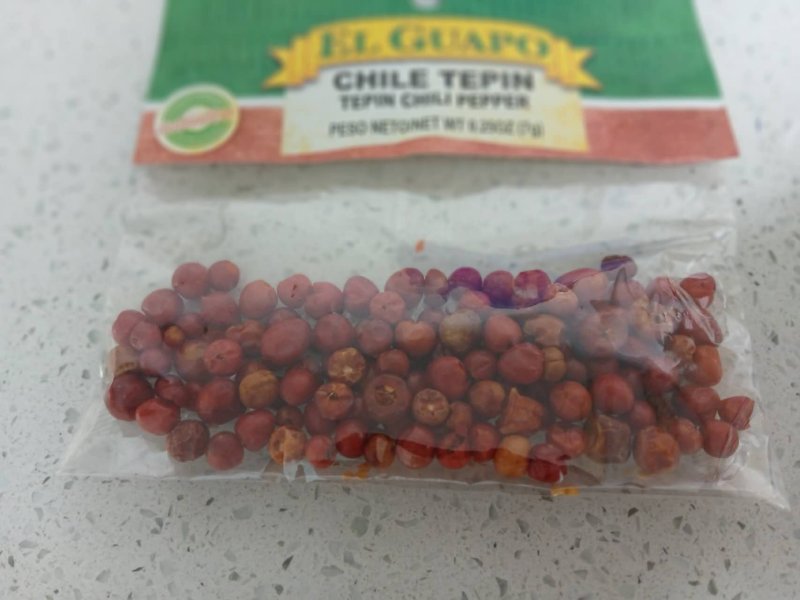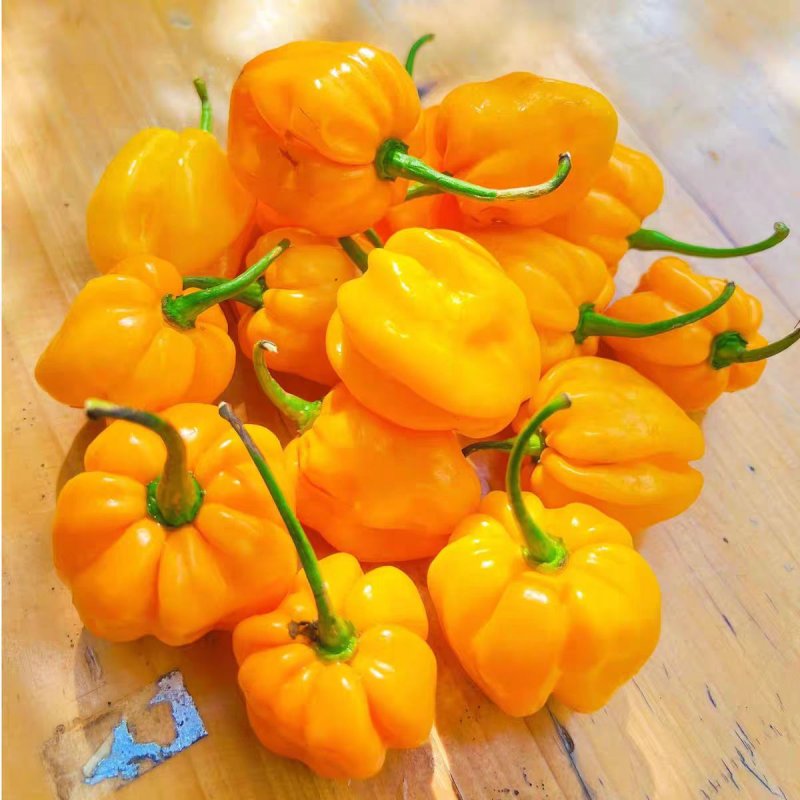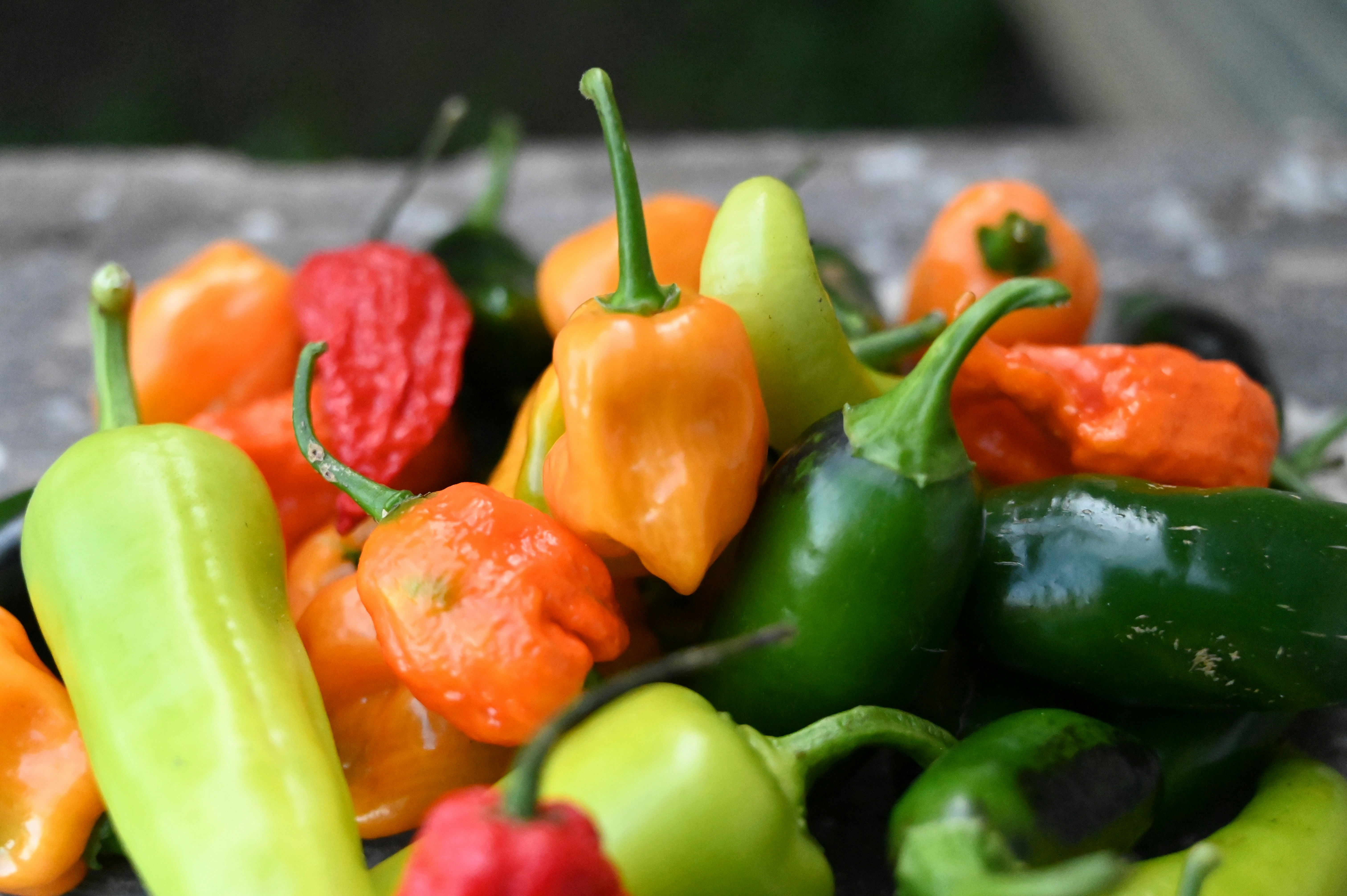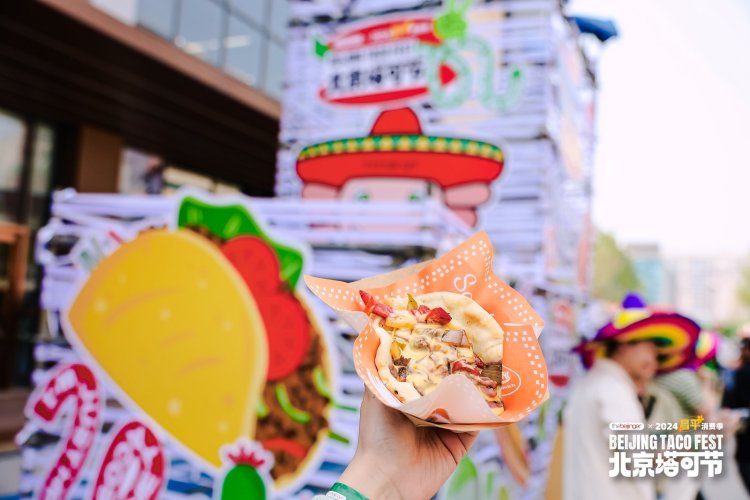Mandarin Monday: All About Chili Peppers
Mandarin Monday is a regular series where we help you improve your Chinese by detailing fun and practical phrases and characters.
It’s getting hot out in Beijing, which means it’s about time to embrace the heat and burn your taste buds at the Beijinger’s 2025 Hot & Spicy Fest!
As an ode to the vibrant little plants that set our mouths – or hearts, if the Ghost Pepper gets you there – ablaze, we’ve compiled a list of the most well-known naturally occurring chili peppers, their names in Chinese, and where to find them in Beijing and/or China.
But first, a note on Scoville Heat Units (SHU) – 斯科维尔辣度单位 Sīkēwéi'ěr Làdù Dānwèi.
Modern day SHU measurement is based on the result of a test developed by American pharmacist Wilber Scoville (威尔伯·斯科维尔 Wēiěrbó·Sīkēwéi'ěr) in 1912 in which an exact amount of capsaicinoids is extracted from peppers, progressively diluted in sugar water and tasted by trained human testers until heat can no longer be detected.
In Scoville's original tests, the final amount of sugar water used – say, 5,000 drops of sugar water to dilute the heat of a specific quantity of capsaicin – gave the pepper its heat rating. Nowadays, corresponding levels of heat are assigned an SHU number. In the example above, it’d be 5,000 SHU.
Now that the science is out of the way, it’s on to the spice.
Chiltepín – 奇尔特平辣椒 Qíěrtèpíng Làjiāo

This is the mother of all chilies. No, seriously: The chiltepín chili, commonly found in northern Mexico and the southwestern US, is believed to be the wild ancestor of most chili peppers around the world today.
While it might be small, this little bugger packs a punch, clocking in at 40,000-100,000 SHU, or five to 40 times hotter than a jalapeño. It’s characterized by a bright, smoky flavor with a burst of heat. The chiltepín is commonly enjoyed crushed up into salsas and marinades.

Unfortunately, chiltepín chilis aren’t readily available for purchase in China, but there is a substitute: chile piquín (皮金辣椒 Píjīn làjiāo).
Earthy and with a more gradual buildup of heat, dry chile pequín, which also hails from Mexico, can be purchased on Taobao. Even though it’s not as hot as its small relative (it’s only 30,000-60,000 SHU), piquín is a decent stand-in for chiltepín.
Jalapeño – 哈拉佩尼奥 Hālāpèiníào

The one, the only, the 墨西哥辣椒 Mòxīgē làjiāo (its more common Chinese name). The jalapeño hails from the region of Xalapa in the central Mexican state of Veracruz and gained popularity after moving to Texas and the rest of the US in the 20th century.
Jalapeños are relatively mild, or 2,500-10,000 SHU. You can easily find them in their pickled form (腌墨西哥辣椒 yān mòxīgē làjiāo) in Beijing, with fresh jalapeños available from some import markets in the Sanyuanli area or on Taobao.
When it's roasted and dried after becoming red and ripe, the jalapeño morphs into the chipotle (奇波特辣椒 Qíbōtè làjiāo), which you can find canned (奇波特辣椒罐头 qíbōtè làjiāo guàntóu) with onions in a thick sauce.
Erjingtiao – 二荆条辣椒 Èrjīngtiáo Làjiāo

A cornerstone of Sichuan and Hunan cuisine, this chili gets its moniker from the ancient 二荆 Èrjīng chili-growing region somewhere between Chengdu and Chongqing. Commonly used in its dried form and with a SHU of 30,000-50,000, erjingtiao is in everything from the base of Sichuan hot pot to 豆瓣酱 dòubànjiàng.
They share the Sichuan kitchen throne with the Facing Heaven chili (朝天辣椒 Cháotiān làjiāo) and...
Millet Chili – 小米辣椒 Xiǎomǐ Làjiāo

The “little rice” chili also features in Yunnan and Guizhou cuisines, boasting a fruity, somewhat earthy flavor and an SHU of 50,000-100,000. The pepper can be found in its fresh or dry form from most grocers.
Habanero – 哈瓦那辣椒 Hāwǎnà Làjiāo

This stubby little fellow is one of the world’s hottest natural peppers. Clocking in at 100,000-350,000 SHU, or 12 to 140 times hotter than a jalapeño, it originated in central America before spreading northward to Mexico, with the Yucatan peninsula being a hub for the pepper today.
What’s more, the habanero comes in a rainbow of colors, with orange being the most common, followed by red, brown, and the rarer white or peach colored variety. Habaneros have an almost perfume-like aroma, with a fruity, floral, and tropical flavor that makes them great for sauces and marinades.
While it’s difficult to find habaneros in Beijing, you can easily find their Chinese relative, the...
Yellow Lantern – 黄灯笼椒 Huángdēnglóng Jiāo

Also known as the Hainan Yellow Lantern (海南黄灯笼椒 Hǎinán Huángdēnglóng jiāo), this pepper is grown on China’s southern tropical island province of Hainan. The peppers are often milder than a habanero – yellow lanterns are usually around 100,000-225,000 SHU – and have a bright, citrus-forward flavor profile.
You can often find them in chili sauces and pastes from Hainan as well as fresh from markets in the Sanyuanli area of Beijing.
Ghost Pepper – 魔鬼辣椒 Móguǐ Làjiāo

The Bhut Jolokia, the world’s hottest naturally occurring chili pepper, has been grown and used in northern India for centuries. It started to gain notoriety in the 2000s, especially after it was crowned the world’s hottest chili by the Guinness World Records in 2007.
The small bright red chili is a beast, with an SHU of 800,000 to over 1 million. It’s also quite deceptive, with fruity notes delaying the onset of heat until 30 seconds or so after the first bite. Thankfully, its ability to thrive in hot and tropical climates allows it to be grown in droves in Yunnan (where it's sometimes called 辣王 là wáng, or “spice king”), making fresh and dry versions easier to find in China.
Which of these chili peppers can you eat without flinching? Let us know in the comments!
READ: Early Bird Tickets for Hot & Spicy Fest 2025 on Sale Now!
Images: Unsplash, Pixabay, Wikimedia Commons: Borshingwoods (used without alteration under CC BY-SA 4.0), Canva, Taobao







